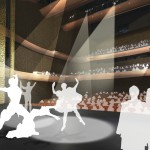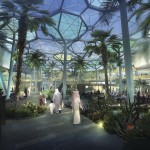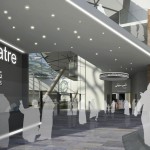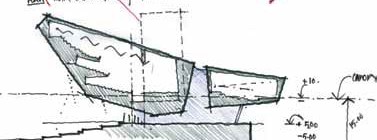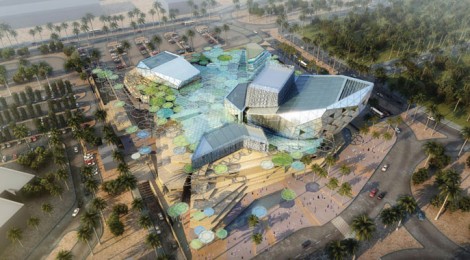
A Cultural Heart
by Richard McDowell
It could be said that one way of assessing a society’s degree of civilisation is the extent to which it invests in cultural activities and the type of these activities it promotes. Expressing and celebrating the indigenous cultures within a city both increases confidence and strengthens national and individual identity.
BDP has designed numerous significant cultural buildings over its 50 years. Many of these have been in central locations within well established and historic cities whether reworkings of existing facilities, such as the British Museum and Royal Albert Hall in London, or new build projects, such as the Perth Concert Hall. They have all been designed to respond specifically to their existing cultural and physical contexts. Others have been conceived as regeneration projects where the power of a cultural offer to entice the public back into long forgotten areas has been successfully harnessed such as at the Glasgow Science Centre or Chatham Historic Dockyard. Yet other projects have had even higher aspirations and, in so doing have seen cultural buildings chosen specifically as keystone civic projects in the development of new cities in previously unoccupied regions of the world.
One recent example of the latter is BDP’s Sabah Al Ahmad City Cultural Centre in southern Kuwait. In developing the brief for this new city, the Kuwaiti State recognised not only the importance that an understanding of a nation’s cultural heritage plays in empowering the individual but also the ability of such facilities to bind a potentially heartless new city together physically and socially.
- Sabah Al Ahmad, City Cultural Centre, Kuwait.
- Sabah Al Ahmad, City Cultural Centre, Kuwait.
- Sabah Al Ahmad, City Cultural Centre, Kuwait.
Cities, by their very nature, are complex organisms which generally evolve gradually over many years. As such the key challenges for BDP of the Sabah Al Ahmad City Cultural Centre project were to bring this sense of place and identity to an area which until recently was nothing but desert.
Creating a rooted intervention of this scale, whilst maintaining a humanistic approach is a complex challenge culturally, architecturally and environmentally. In undertaking such a task it is imperative to distinguish between the historic, heritage aspect of a nation’s culture which by its very nature provides a retrospective view and the potentially conflicting desire to promote and develop a nation’s popular culture looking forward. This dichotomy is perhaps best captured in our client’s description of the building as a ‘cultural mall.’
It is this tension and the energy inherent in juxtaposing the past, present and future that we have sought to capture in the architectural expression of the Cultural Centre. The aim is to create a sense of permanence and timeless yet dynamic and forward looking facility in which the residents of Kuwait can develop and reinforce their understanding of their own cultural identity and ultimately contribute back into it.
In our view however, it is not so much the building that forms the heart of the city but the central garden space within it which will make this building particularly successful. This oasis is accessible via deeply cut ravines which ramp down through the heavy stone plinth of the centre providing a cool shaded approach to the generous gardens beyond. Enclosed and climatically controlled to provide shelter from the heat and sand storms of the desert, this space provides a unique green and lush environment where people from the city will be able to come together and interact, whether using the associated cultural facilities or not.
The Sabah Al Ahmad City Cultural Centre responds to the dual, sometimes conflicting, needs to function as an architectural reference point on a city scale while at the same time providing a place of a human scale. BDP’s proposals capture the dynamism and energy of the performing arts and music whilst at the same time providing cool calm relaxation and contemplation areas of unique scale and lushness. In doing so the centre forms a true heart space within the new city. This new heart is founded on the promotion of culture, arts and literature symbolising not just a cultural but a national rebirth and creating a true cultural oasis in the desert.
